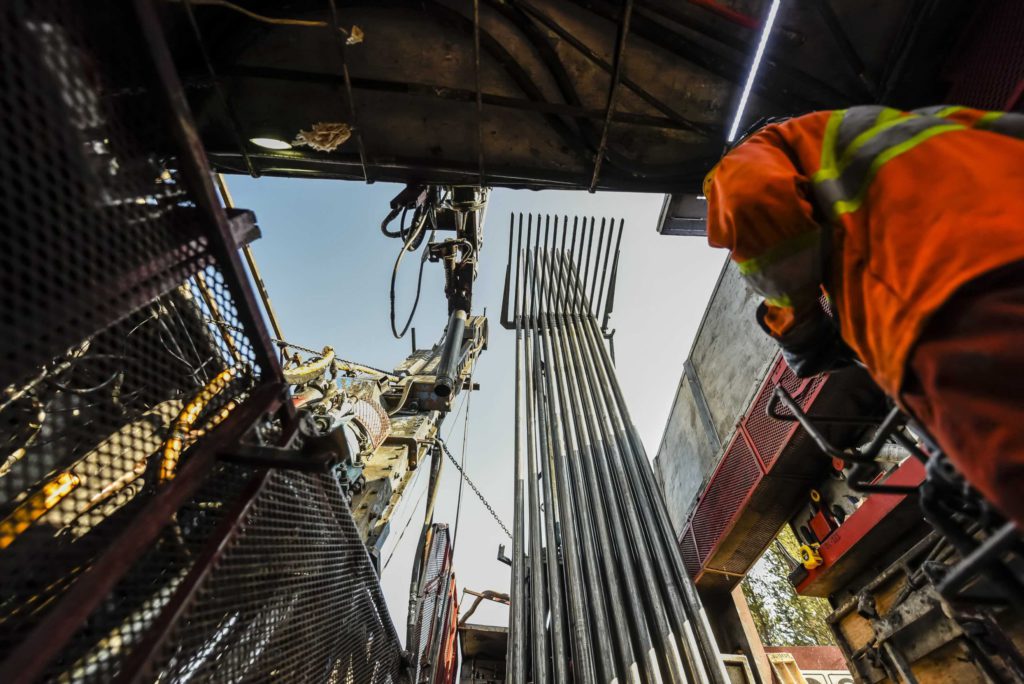
When Kinross Gold (TSX: K; NYSE: KGC) bought the Great Bear project in northern Ontario’s prolific Red Lake district two and a half years ago, its thinking was to acquire an extraordinarily high-grade gold asset that would one day become a world-class mine.
Now a preliminary economic assessment (PEA) and an updated resource estimate seem to bear that out. A combined open-pit and underground mine could produce an average of 518,000 oz. gold a year at an all-in sustaining cost of $812 per oz. over the first eight years of an initial 12-year mine life, Kinross said Tuesday
First production after a two-year construction period could start as early as 2029. At current estimates, Great Bear is expected to produce a total of 5.3 million oz. at cash costs of $594 per ounce.
“We became new owners in February 2022 and what we saw in Great Bear at that time and continue to see today is a top-tier asset with significant potential for a large, long-life, low-cost mining complex,” Kinross CEO Paul Rollinson told investors and analysts on a conference call. “The PEA is a point in time estimate and is only showing an initial window into the long-term potential of this asset. We see potential to support a multi-decade asset.”
The project, 500 km northwest of Thunder Bay, has an after-tax net present value (at a 5% discount rate) of $1.9 billion and an internal rate of return of 24.3% at a gold price of $1,900 per ounce. Construction costs were pegged at $1.2 billion, and total initial project capital costs of $1.4 million could be paid back in just under three years.
Shares of Kinross on the TSX rose 6% to C$12.26 on Tuesday afternoon. Over the last year the company has traded in a range of C$5.91 to C$13.08 per share and has a market cap of C$15.1 billion. Carey MacRury, a mining analyst at Canaccord Genuity, has a price target of C$16 per share.
“We expect more ounces to be added to the mine plan as drilling gets underway underground,” he wrote in a comment on the PEA, noting that Kinross remains in his top picks among senior gold producers.
“The PEA highlights a compelling project with further upside from resource expansion at depth,” Raymond James mining analyst Farooq Hamed wrote on Tuesday. “However, the timeline to production is still five years away, representing a longer-term positive.”
The initial mine plan envisions concurrent open-pit and underground mining in the first eight years followed by combined underground mining and stockpile processing in years eight to 12. That offers production flexibility and the opportunity for underground exploration drilling to expand the resource and mine life, the company says.
Since acquiring the project, which did not have a resource estimate, Kinross has drilled more than 420 km on Great Bear’s recently expanded 120-sq.-km land package. An updated resource based on drilling to April this year in three zones (LP, Hinge and Limb) estimates Great Bear contains 30.3 million measured and indicated tonnes grading 2.81 grams gold per tonne for 2.7 million oz. gold and another 25.5 million inferred tonnes at 4.74 grams gold for 3.9 million gold ounces.
The resource was calculated at a gold price of $1,700 per oz. and the open pit within a $1,400 per oz. pit shell. The cut-off grade for the open pit was 0.55 gram gold and 2.3 grams gold for the underground.
Earlier this year, exploration focused on directional drilling beyond 1,000 metres depth and demonstrated strong widths of high-grade below the current PEA inventory. Drilling in the main LP Zone returned 3.8 metres grading 9.5 grams gold at nearly 1,600 vertical metres.
“Through our due diligence our technical team had classified Red Lake vein-style mineralization and importantly also mineralization more similar to what is seen at the Hemlo Camp,” Rollinson said on the call, referring to Barrick Gold ’s (TSX: ABX; NYSE: GOLD) mine about 800 km southeast. “Our thesis was that this mineralization would extend high-grade at depth,” he said. “Results have been exceeding our expectations.”
This year the company plans to focus drilling on linking zones at depth at LP and more directional work at Hinge and Limb. Exploration will also focus on brownfield exploration for more open-pit and underground opportunities. Recent exploration results below the PEA inventory include 22.7 metres at 6.51 grams gold at the Yauro zone and 5.4 metres of 7.82 grams gold at Discovery.
“We really do view this PEA as just the beginning of the value story at Great Bear,” William Dunford, senior vice-president of technical services, said on the conference call. “We need to get underground to show the story,” he said. “As we progress drilling underground, we see potential to increase underground production in later years.”
Dunford, who was part of Kinross’s team at the Kupol mine in Russia’s Far East until the company sold the mine in 2022, pointed to potential similarities with Great Bear.
“Many of our team previously worked in the Russian region and have seen this at Kupol,” Dunford said. “When we started there, we had 4 million oz. of resource and by 2022 we had produced over 7 million ounces.”
In terms of processing, ore from the mine would be sent to a 10,000-tonne-per-day conventional mill. Testing has shown clean metallurgy with an average life-of-mine recovery of 95.7%. Based on the metallurgy, the processing plant would include a semi-autogenous grinding and ball mill, pebble crushing, gravity concentration, leaching, followed by carbon-in-pulp adsorption, elution, electrowinning and smelting to produce gold doré.
The tailings design includes the addition of a desulphurization flotation circuit to remove sulphides and prevent the tailings generating acid. The LP Viggo pit can provide an in-pit tailings storage facility.
Great Bear, 24 km southeast of the town of Red Lake, is accessible via Highway 105, and has access to a provincial transmission power line and Enbridge natural gas line.